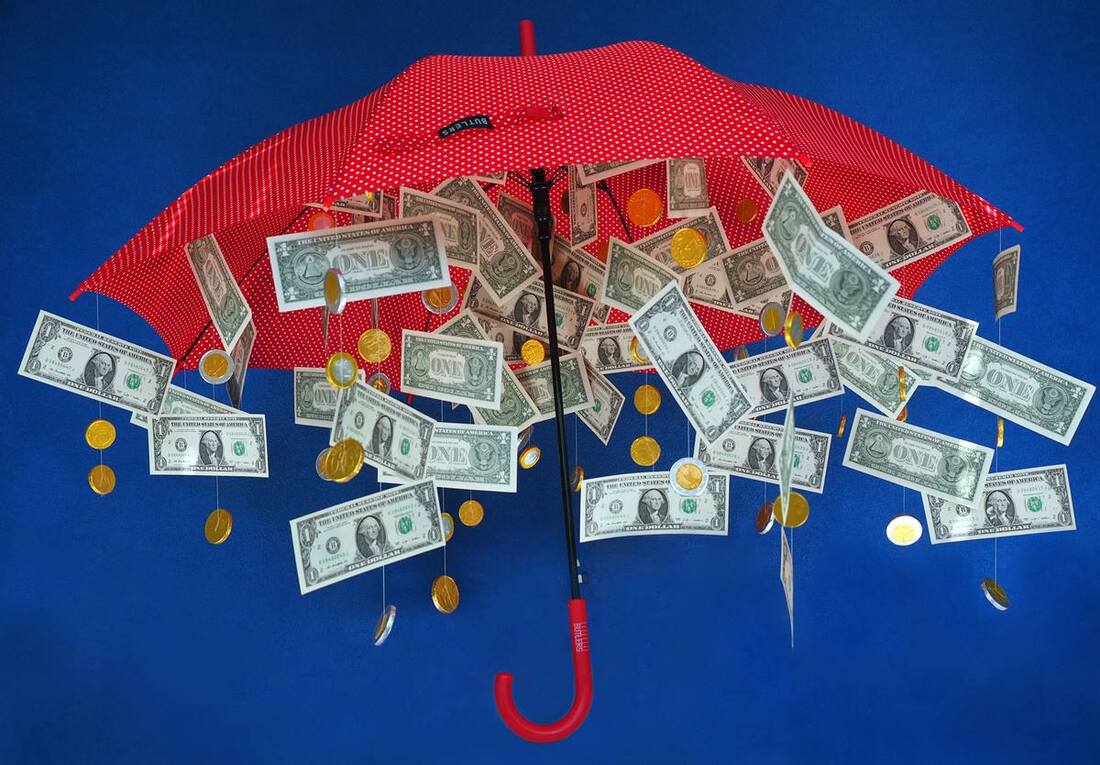Why You Need It. How to Start It. Best Practices to Leverage It. WHY YOU NEED OPERATING RESERVES The news is full of warnings about the next economic downturn and possibly even a recession. Is your nonprofit ready? Is your financial house in order? Is your capital position and structure strong enough to withstand the ebbs and flows of our economic system? Recession aside, does your organization have enough moolah in reserves in case your air conditioner goes out (a catastrophic event in our sunny state of Florida)? And if your funds are used for an unexpected occurrence, will you still have the ability to deliver services in your community? This article is all about shoring up your ability to sustain operations when the unexpected happens (like when your office temp is 88 degrees) internally or externally. First off: do you have an operating reserves policy? If so, when is the last time your leadership team reviewed the policy? If it’s been a while read on as we guide you through the process of building an operating reserves policy, and the implementation and ongoing oversight of that policy. [ALSO READ: 5 Key Elements You Need in Your Operating Reserves Policy] According to Propel Nonprofits, “An operating reserve is an unrestricted fund balance set aside to stabilize a nonprofit’s finances by providing a cushion against unexpected events, losses of income, and large unbudgeted expenses.” Likewise, an operating reserve policy is meant to, “define and set goals for reserve funds, clearly describe authorization for use of reserves, and outline requirements for reporting and monitoring.” Our team at Blue Fox hears comments like this all the time, “Yes, we have a policy. I think my operations coordinator found a sample on some website. We presented it to our board a couple years ago and they approved it right away.” Oh boy do comments like that scare us! Look, it’s helpful that your nonprofit found a sample policy on the interwebs for free. But that’s all it is – a sample. A starting point. The very first step in the process. Your organization is not like others. Your cash flow is different. The diversity of your income varies. And your liquid assets are unlike that of the organization that wrote the sample. Your operating reserve policy should be as unique as your organization, plain and simple. So, let’s talk about the best practices for starting an operating reserves policy. And don’t hesitate to call on the Blue Fox team for advice and support along the way. We want all the organizations in our den to achieve fiscal sustainability and security. We can help assess your financial position today and provide some benchmarks to help you make decisions as you set up your operating reserves for tomorrow. HOW TO START AN OPERATING RESERVE As with most strategic decisions, the first step is to broach the conversation with your board and/or finance committee. Your treasurer, in particular, is a good first call. If you already have a policy in place, request a call to discuss revising/refinement of the policy. Most boards are eager to have this discussion because they understand the importance of a rainy-day fund. Once you have board buy-in the next step is to get your collective arms around how much you want to allocate to reserves. When times are good and the bank account is flush it can be tempting to allocate TOO much. (Especially if your organization suffered during the Great Recession.) On the flip side, some leaders skew to saving too little. We want to Goldilocks this thing and get it juuuust right. How? In order to determine the target reserve amount, you’ll want to take a look at your organization’s historic “burn rate” – i.e. how much you spend each month to keep the lights on, pay your staff, and, critically, deliver on your mission. How far back you should go to determine your burn rate can vary, but a good rule of thumb is to look at your average monthly spending for the last 12-24 months. Most accounting software should be able to produce a profit and loss report broken down by month for any given period. That’s the report you want to start with. As you review the data, you’ll next want to back out/offset your expenses by any unusual expenditures that occurred within your report time period. For example: if your organization went through a website redesign over a 6-month period in the last year and it cost $60k, you’re going to want to subtract $60k from the total expenses during that period. The idea here is to back out expenses that won’t be normal and recurring. The next step is to settle on how many months of expenses you want to (or are able to) set aside. Smaller organizations may be comfortable with 1-3 months, or even just enough to cover 1 pay period. Large organizations may take a more aggressive approach to saving and shoot for 12+ months of reserves. No more than 2 years of operating expenses should be held in reserve. We find the sweet spot for most nonprofits is 6-9 months of expenses. Once you have an amount in mind and the data to back it up, propose it to your board/treasurer/finance committee and discuss. With their blessing you can move forward with developing a policy. TIP: Don’t move any money or add “operating reserves” to your books as a line item until you have an operating reserve policy approved by the board! BEST PRACTICES TO LEVERAGE YOUR RESERVES: THE POLICY ITSELF IS THE KEY The first step in deriving leverage from your operating reserves is to structure a board approved operating reserve policy for its use. If you have a sample, great. If not, you can easily find one online through a search. We recommend the staff/leadership develop a policy draft and then pass it to the board/finance committee for review, feedback, and approval. We recommend that your policy should have these 5 key elements in order to be fully and appropriately leveraged!  Once your policy is drafted with solid answers to these questions, you’ll want to put it back in front of your finance committee/board for review and discussion. Policy approval should be unanimous. All board members should be on the same page with this strategic use of capital! If consensus is hard to find, keep working until you get there. What you don’t want is a dramatic, painful moment when you eventually have to use the funds. So bring everyone together on this from the get-go. When you get approval, go ahead and move that money (if you have it) or formalize your procedures for building the fund. Be sure to add the operating reserves to your accounting general ledger, too, so it’s clearly there for all to see. Operational touchstones like operating reserves aren’t sexy, we know. But there is no doubt that, as with our own individual savings accounts, we feel better when we know that emergency fund is there. We feel empowered to move ahead with our lives and financial decisions. We feel confident in our ability to deliver the critical services and support that we do to all our stakeholders and clients. If you need assistance starting or updating your operating reserves policy, Blue Fox is happy to consult with your leadership and we will even take those pesky tasks like bookkeeping, payroll and tax prep off your hands. We do that too! Give our friendly team a call any time at (321) 233-3311 or email [email protected]. Authors: Blue Fox CEO, Chantal Sheehan and Blue Fox Director of Marketing, Chelsea Clementi
0 Comments
Your comment will be posted after it is approved.
Leave a Reply. |
Our BlogWelcome to the Blue Fox Blog! A fairly entertaining source of info and news related to our company, nonprofits, social sector trends, and, of course, accounting. Enjoy! Top ArticlesBack to Basics: How to Set Up Your Nonprofit Chart of Accounts
How "Small" Payroll Mistakes Cause Multi-Year S#!t Storms for Nonprofits Behind the Scenes, New Client Onboarding Call When to Hire a Tax Professional - 10 Factors to Consider 40+ Ideas to Light a Fundraising Fire Under Your Nonprofit Board Members Why Outsource Your Nonprofit Accounting to Blue Fox? Ask One of Our Newest Clients Client CASE STUDY: One of The Most Financially Sustainable Nonprofit Orgs We Know The Magical Nonprofit Financial Ratio Matrix 10 Reasons to Outsource Your Nonprofit Accounting How to Make Your Nonprofit Recession-Proof How to Engage Your Board of Directors in Financial Conversations QB Tip of the Month: How to Use Classes for Painless Grant Writing When to Hire an Accountant for Your Social Impact Org Are You Paying Too Much for Payroll? Company NewsBlue Fox Teams Up With Bloomerang to Develop Nonprofit Resources
Blue Fox Earns Better Business Bureau Accreditation Blue Fox Launches Protected By Logo Blue Fox - The Origin Story Categories
All
Archives
July 2024
|
BLUE FOX
Phone: (321) 233-3311, Email: [email protected]
Mailing Address: 2542 Woodfield Circle, Melbourne, FL 32904
Copyright © 2024 - All Rights Reserved
Holiday office closures: To give our employees time to unplug and refresh with their family and friends, the Blue Fox virtual office closes
for all federal holidays, the week of Thanksgiving, and the week between Christmas and New Year's Day.
Phone: (321) 233-3311, Email: [email protected]
Mailing Address: 2542 Woodfield Circle, Melbourne, FL 32904
Copyright © 2024 - All Rights Reserved
Holiday office closures: To give our employees time to unplug and refresh with their family and friends, the Blue Fox virtual office closes
for all federal holidays, the week of Thanksgiving, and the week between Christmas and New Year's Day.


 RSS Feed
RSS Feed









